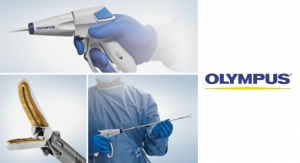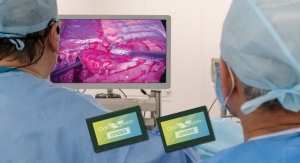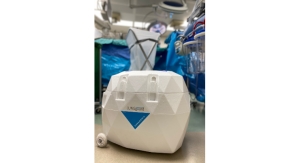Del R. Lawson, Ph.D., R&D manager, Critical and Chronic Care Solutions Division, 3M06.04.18
Diabetes management has come a long way over the past few decades. The disease that used to require patients to visit their doctor’s office on a weekly basis for glucose readings can now be continuously monitored on-the-go in the office or at home. Innovations in medical technology, such as continuous glucose monitoring devices, have allowed those with diabetes to maintain their independence and active lifestyles. The latest trends in diabetes management technology, like wireless monitors and insulin pumps, allow for easier tracking and harder-to-miss alert notifications that dramatically improve the health of those living with diabetes. While medicine strives to attain a diabetes-free future, device and component manufacturers have a responsibility to help improve quality of life by making disease management easier, less cumbersome, and less invasive.
One specific technology that plays a pivotal role in diabetes-related devices, and wearable medical products overall, is adhesive. Regardless of whether it’s sticking a device to skin or adhering device components together, adhesives help solve design challenges, help prevent skin injuries associated with the device, and ensure the product is working as intended. Adhesives also help attain a common healthcare industry goal—to extend a device’s wear time in order to help improve quality of life. But placing a foreign object on the body for any length of time can cause serious issues, particularly if the wrong adhesive is chosen. To help mitigate potential issues and enable future diabetic device innovation, it’s important to understand the science behind sticking to skin, the breadth of adhesive types and when they’re appropriate to use, and how to overcome common diabetic device design issues.
The Science Behind Sticking to Skin
Skin is a complicated, living organ that provides the body’s first line of defense against infection. It helps regulate body temperature and protect against dehydration, as well as chemical and physical elements. For skin to function as intended, however, it must be allowed to breathe, expel moisture, and move as it normally would. Without this flexibility, skin’s functional properties will be compromised, potentially leading to larger issues. To help ensure devices are successful, design engineers should consider the following four characteristics that impact skin.
Age—Just as the rest of the body changes with age, so does skin. Age impacts skin’s functioning capabilities and its susceptibility to injury. Each stage comes with its own set of characteristics.
Hair growth—As hair grows, it can push up against the device, causing it to fall off. This isn’t an issue with all locations of the body, but should be a consideration.
Lifestyle—Skin’s properties are affected by activity levels, diet, and health conditions. Specific factors to keep in mind are movement—as it alters the body contour underneath the device; and environment—with heat and humidity, sweat and moisture production increase, while freezing temperatures dehydrate. Knowing how active the intended user will be, the conditions he/she may experience, and the climate the wearable will be exposed to will help to better inform adhesive selection.
Adhesive Types
When sticking devices to skin or building devices that come into contact with skin, it’s important to know about the various types of adhesives and how each type is intended to interact with skin. Below are the three main categories.
Acrylic adhesives—These are commonly used in the healthcare industry because they’re breathable and biocompatible, an essential combination when adhering wearable devices beyond several days. They can also be formulated to be nearly as aggressive or as gentle as the following two types.
Silicone adhesives—Optimal for applications where gentleness is required, silicones conform to skin immediately upon application. They’re ideal for infants, the elderly, and those with fragile or sensitive skin because they can be removed with less pain and trauma. With moderate breathability and limited adhesive capability (only several days at most), current silicones on the market are not formulated for long-term applications.
Synthetic rubber-based adhesives—They provide strong, instant adhesion upon application, but rapidly lose it over the span of a few days. A device that’s repeatedly re-applied in the same area of the body, like those monitoring diabetes, should not use this type because of an elevated MARSI risk. It also has limited breathability.
An additional characteristic to keep in mind is that most adhesives applied to skin are pressure sensitive, meaning they require pressure upon application to maximize adhesion. But different adhesive types take different lengths of time to reach their maximum adhesive capability. For instance, silicones conform instantaneously, as previously mentioned, whereas acrylics become more adhesive over time. This difference must be taken into account during the device design phase.
Overcoming Common Diabetic Device Design Issues
Common diabetic device design issues associated with adhesives include premature detachment, skin irritation, and excessive adhesive strength. Most of the time, these issues are preventable. What it comes down to is selecting the right adhesive for each device design. Let’s explore each of these common pitfalls and how to overcome them.
Premature detachment—When devices, like monitors or sensors, prematurely fall off, the adhesive sticking it to the body may be at fault. This happens when the adhesive lacks sufficient durability or strength for the intended duration of wear. To help keep this from happening, design engineers should consider a pressure sensitive medical adhesive with a breathable backing. A carefully selected adhesive can withstand daily wear and tear, while a breathable backing helps ensure skin functions as close to normal as possible.
Sometimes a device falling off too soon is caused by an external force knocking it off, like the wearer accidently bumping against a corner or door jam. While design engineers don’t have the power to prevent accidents, the device design can have a slimmer profile to stay closer to the body and farther out of harm’s way. Another possible solution is the use of an extended adhesive skirt that extends beyond the device. 3M’s internal clinical studies show that extended skirts reduce lift from normal wear and tear associated with wearing a medical device.
Skin irritation—Some go into the design process with the mindset “tape is tape.” The sentiment may be true in everyday situations, but when designing devices, particularly those that come into contact with skin, such an opinion is inappropriate. Thinking along these lines can cause harm to the wearer. Be aware that incomplete curing or finishing of an adhesive can result in residual contaminants migrating into or onto the skin; these are common causes of skin reactions. Even when these considerations have been thought through, some device users may still experience skin reactions.
Excessive adhesive strength—As harmless as it may sound, using too strong of an adhesive is one of the most dangerous pitfalls. While a strong bond will help the device remain adhered for as long as intended, it can cause skin to strip away from the body. This occurrence can cause immediate pain to the wearer and compromises his/her first line of defense against infection, potentially leading to additional problems in the future. That’s why it’s critical to not “over-design” a device. Just because a certain adhesive is incredibly strong, doesn’t mean it’s right for every application, especially when sticking to skin. To set a device up for success and keep the intended wearer safe, designers should first consider the product’s intended wear time. If a sensor is being adhered to the skin, how long until the wearer must change it? Knowing how long the device or sensor is meant to do its job will ensure the adhesive selection process is headed down the right path.
Unfortunately, not every solution will be a catch-all. The reality is that everyone’s skin is unique and may react in different ways. In order to help ensure each device is set up for success, design engineers should consider partnering with experts knowledgeable in both adhesives and the science of skin. Online platforms like 3M’s FindMyAdhesive.com can also provide a good starting point.
Managing diabetes is a full-time job, and it shouldn’t be further complicated by the device monitoring it. Device designers must carefully consider all available adhesive options because choosing the right stick-to-skin adhesive could simplify medical treatment for patients requiring wearable devices like a continuous glucose monitor.
Del R. Lawson , Ph.D., is a R&D manager in 3M’s Critical & Chronic Care Solutions Division with more than 25 years of experience.
One specific technology that plays a pivotal role in diabetes-related devices, and wearable medical products overall, is adhesive. Regardless of whether it’s sticking a device to skin or adhering device components together, adhesives help solve design challenges, help prevent skin injuries associated with the device, and ensure the product is working as intended. Adhesives also help attain a common healthcare industry goal—to extend a device’s wear time in order to help improve quality of life. But placing a foreign object on the body for any length of time can cause serious issues, particularly if the wrong adhesive is chosen. To help mitigate potential issues and enable future diabetic device innovation, it’s important to understand the science behind sticking to skin, the breadth of adhesive types and when they’re appropriate to use, and how to overcome common diabetic device design issues.
The Science Behind Sticking to Skin
Skin is a complicated, living organ that provides the body’s first line of defense against infection. It helps regulate body temperature and protect against dehydration, as well as chemical and physical elements. For skin to function as intended, however, it must be allowed to breathe, expel moisture, and move as it normally would. Without this flexibility, skin’s functional properties will be compromised, potentially leading to larger issues. To help ensure devices are successful, design engineers should consider the following four characteristics that impact skin.
Age—Just as the rest of the body changes with age, so does skin. Age impacts skin’s functioning capabilities and its susceptibility to injury. Each stage comes with its own set of characteristics.
- Infants: Babies have very thin, fragile skin. Their epidermis hasn’t fully developed, and it can be easily damaged.
- Adolescence: The amount of oil and sweat production changes.
- Healthy young adult: Skin is elastic and durable.
- Adult to elderly: Aging skin becomes drier, thinner, and more fragile, increasing the risk of skin injuries.
Hair growth—As hair grows, it can push up against the device, causing it to fall off. This isn’t an issue with all locations of the body, but should be a consideration.
Lifestyle—Skin’s properties are affected by activity levels, diet, and health conditions. Specific factors to keep in mind are movement—as it alters the body contour underneath the device; and environment—with heat and humidity, sweat and moisture production increase, while freezing temperatures dehydrate. Knowing how active the intended user will be, the conditions he/she may experience, and the climate the wearable will be exposed to will help to better inform adhesive selection.
Adhesive Types
When sticking devices to skin or building devices that come into contact with skin, it’s important to know about the various types of adhesives and how each type is intended to interact with skin. Below are the three main categories.
Acrylic adhesives—These are commonly used in the healthcare industry because they’re breathable and biocompatible, an essential combination when adhering wearable devices beyond several days. They can also be formulated to be nearly as aggressive or as gentle as the following two types.
Silicone adhesives—Optimal for applications where gentleness is required, silicones conform to skin immediately upon application. They’re ideal for infants, the elderly, and those with fragile or sensitive skin because they can be removed with less pain and trauma. With moderate breathability and limited adhesive capability (only several days at most), current silicones on the market are not formulated for long-term applications.
Synthetic rubber-based adhesives—They provide strong, instant adhesion upon application, but rapidly lose it over the span of a few days. A device that’s repeatedly re-applied in the same area of the body, like those monitoring diabetes, should not use this type because of an elevated MARSI risk. It also has limited breathability.
An additional characteristic to keep in mind is that most adhesives applied to skin are pressure sensitive, meaning they require pressure upon application to maximize adhesion. But different adhesive types take different lengths of time to reach their maximum adhesive capability. For instance, silicones conform instantaneously, as previously mentioned, whereas acrylics become more adhesive over time. This difference must be taken into account during the device design phase.
Overcoming Common Diabetic Device Design Issues
Common diabetic device design issues associated with adhesives include premature detachment, skin irritation, and excessive adhesive strength. Most of the time, these issues are preventable. What it comes down to is selecting the right adhesive for each device design. Let’s explore each of these common pitfalls and how to overcome them.
Premature detachment—When devices, like monitors or sensors, prematurely fall off, the adhesive sticking it to the body may be at fault. This happens when the adhesive lacks sufficient durability or strength for the intended duration of wear. To help keep this from happening, design engineers should consider a pressure sensitive medical adhesive with a breathable backing. A carefully selected adhesive can withstand daily wear and tear, while a breathable backing helps ensure skin functions as close to normal as possible.
Sometimes a device falling off too soon is caused by an external force knocking it off, like the wearer accidently bumping against a corner or door jam. While design engineers don’t have the power to prevent accidents, the device design can have a slimmer profile to stay closer to the body and farther out of harm’s way. Another possible solution is the use of an extended adhesive skirt that extends beyond the device. 3M’s internal clinical studies show that extended skirts reduce lift from normal wear and tear associated with wearing a medical device.
Skin irritation—Some go into the design process with the mindset “tape is tape.” The sentiment may be true in everyday situations, but when designing devices, particularly those that come into contact with skin, such an opinion is inappropriate. Thinking along these lines can cause harm to the wearer. Be aware that incomplete curing or finishing of an adhesive can result in residual contaminants migrating into or onto the skin; these are common causes of skin reactions. Even when these considerations have been thought through, some device users may still experience skin reactions.
Excessive adhesive strength—As harmless as it may sound, using too strong of an adhesive is one of the most dangerous pitfalls. While a strong bond will help the device remain adhered for as long as intended, it can cause skin to strip away from the body. This occurrence can cause immediate pain to the wearer and compromises his/her first line of defense against infection, potentially leading to additional problems in the future. That’s why it’s critical to not “over-design” a device. Just because a certain adhesive is incredibly strong, doesn’t mean it’s right for every application, especially when sticking to skin. To set a device up for success and keep the intended wearer safe, designers should first consider the product’s intended wear time. If a sensor is being adhered to the skin, how long until the wearer must change it? Knowing how long the device or sensor is meant to do its job will ensure the adhesive selection process is headed down the right path.
Unfortunately, not every solution will be a catch-all. The reality is that everyone’s skin is unique and may react in different ways. In order to help ensure each device is set up for success, design engineers should consider partnering with experts knowledgeable in both adhesives and the science of skin. Online platforms like 3M’s FindMyAdhesive.com can also provide a good starting point.
Managing diabetes is a full-time job, and it shouldn’t be further complicated by the device monitoring it. Device designers must carefully consider all available adhesive options because choosing the right stick-to-skin adhesive could simplify medical treatment for patients requiring wearable devices like a continuous glucose monitor.
Del R. Lawson , Ph.D., is a R&D manager in 3M’s Critical & Chronic Care Solutions Division with more than 25 years of experience.



























